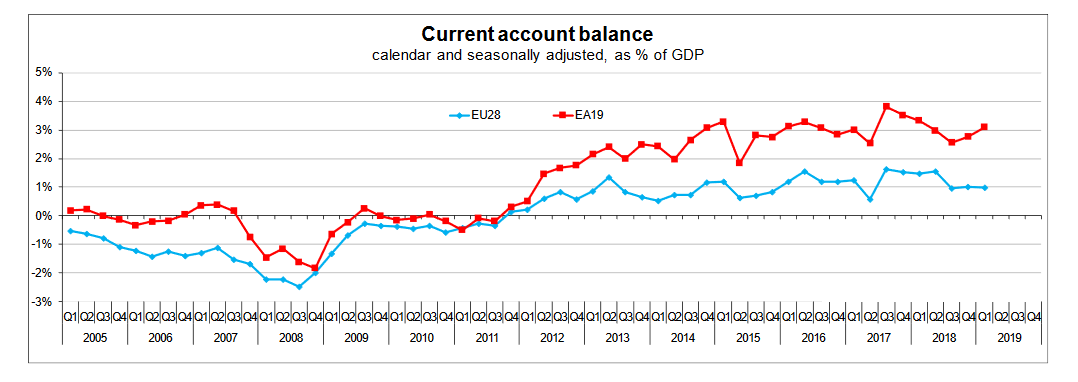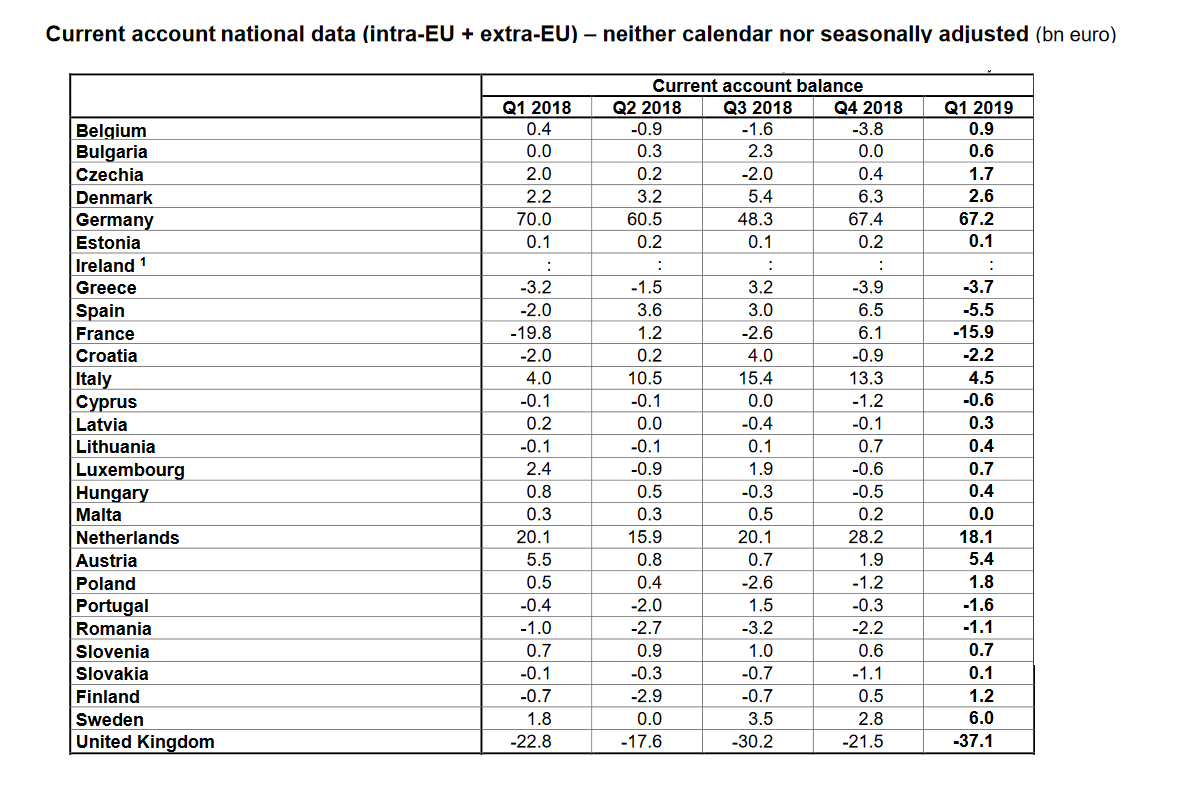The seasonally adjusted current account of the balance of payments for the European Union was a surplus of €40.5billion or 1% of GDP in the first quarter (Q1) of 2019, up from a surplus of €40.2billion or 1.0% of GDP in the fourth quarter (Q4) of 2018 and down from a surplus of €58.3billion or 1.5% of GDP in the first quarter (Q1) of 2018, according to estimates released by Eurostat.

In Q1 2019 compared with Q4 of 2018, based on seasonally adjusted data, the surpluses of the goods account (+€12.5bn compared to +€11.3 bn), and the services account (+€48.6 bn compared to +€42.3 bn) both increased, while the deficit of the secondary income account decreased (-€20.6bn compared to -€27.1 bn). The surplus of the primary income account fell (€0.0 bn compared to €13.6 bn). The deficit of the capital account decreased (-€8.9bn compared to -€54.8 bn).

Main partners
In the first quarter of 2019, based on non-seasonally adjusted data, the European Union recorded external current account surpluses with the USA (+€53.5bn) despite a trade war, Switzerland (+€20.6bn), Hong Kong (+€6.0bn), Canada (+€5.1 bn), Brazil (+€2.5 bn) and Japan (+€0.3 bn). Deficits were registered with China (-€30.6 bn), Russia (-€13.2 bn), India (-€1.9 bn) and offshore financial centres (-€1.0 bn).
Germany accounts for most of the current account surplus
With regards to the total current account balances of the European Member States, based on available non-seasonally adjusted data, eighteen recorded surpluses, eight deficits and one was in balance in the first quarter of 2019. The highest surpluses were observed in Germany (+€67.2 bn), the Netherlands (+€18.1 bn), Sweden (+€6.0 bn), Austria (+€5.4 bn) and Italy (+€4.5 bn), and the largest deficits in the United Kingdom (-€37.1 bn),France (-€15.9 bn), Spain (-€5.5 bn) and Greece (-€3.7 bn). What happens after Brexit when the country with the largest intra European Union trade deficit leaves?

The Eurozone or Euro area (EA) currently includes Belgium, Germany, Estonia, Ireland, Greece, Spain, France, Italy, Cyprus, Latvia, Lithuania, Luxembourg, Malta, the Netherlands, Austria, Portugal, Slovenia, Slovakia and Finland.
The European Union (EU) currently includes Belgium, Bulgaria, Czechia (formerly the Czech Republic), Denmark, Germany, Estonia, Ireland, Greece, Spain, France, Croatia, Italy, Cyprus, Latvia, Lithuania, Luxembourg, Hungary, Malta, the Netherlands, Austria, Poland, Portugal, Romania, Slovenia, Slovakia, Finland, Sweden and the United Kingdom.